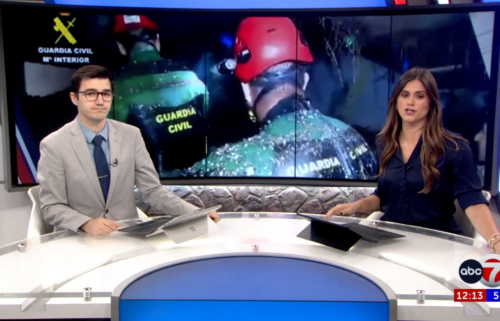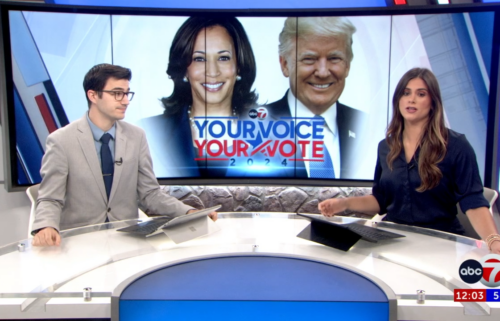Chevron takeaways: Supreme Court ruling removes frequently used tool from federal regulators

Associated Press
WASHINGTON (AP) — Federal rules that impact virtually every aspect of everyday life, from the food we eat and the cars we drive to the air we breathe, could be at risk after a wide-ranging Supreme Court ruling Friday.
The court rejected a 40-year-old legal doctrine colloquially known as Chevron, effectively reducing the power of executive branch agencies like the Environmental Protection Agency and shifting it to the courts.
The doctrine, named after a 1984 case involving the energy giant, has been the basis for upholding thousands of federal regulations but has long been a target of conservatives and business groups, who argue it grants too much power to the executive branch, or what some critics call the administrative state.
Here are some takeaways from the court ruling and its implications.
One less tool for governing
The Chevron decision essentially gave federal agencies the authority to issue rules to implement laws that weren’t clear. And that deference to the executive branch has enabled presidential administrations from both parties to use rulemaking to create policy, especially in times of deep partisan division in Washington.
Friday’s Supreme Court ruling means that the federal government could have a harder time defending those rules in federal court.
Writing for the court, Chief Justice John Roberts said Chevron gave too much power to experts who work for the government. “Courts must exercise their independent judgment in deciding whether an agency has acted within its statutory authority,” Roberts wrote.
The ruling does not call into question prior cases that relied on the Chevron doctrine, he added.
Cara Horowitz, an environmental law professor and executive director of the Emmett Institute on Climate Change and the Environment at UCLA School of Law, said the decision “takes more tools out of the toolbox of federal regulators.”
“By definition, statutes typically don’t clearly define how agencies should tackle new and emerging threats, like climate change, that weren’t well understood when these decades-old statutes were written,″ she said.
Potential impacts on the environment, public health
The decision could set back efforts to reduce air and water pollution, restrict toxic chemicals or even take on new public health threats like COVID—19, environmental and public health advocates said.
Horowitz called the ruling “yet another blow to the EPA’s ability to tackle emerging problems like climate change.”
And Vickie Patton, general counsel for the Environmental Defense Fund, said, “It undermines vital protections for the American people at the behest of powerful polluters.″
Carrie Severino, a lawyer and conservative activist, called the decision “a big victory for the rule of law.″
“Good riddance to Chevron deference, which put a two-ton judicial thumb on the scale of government bureaucrats against the little guy,″ she said.
If regulators “want to win in the future, they need to do a more careful job” and resist the urge to “push their own agendas,″ Severino said.
The ruling follows a Supreme Court decision Thursday that blocks enforcement of EPA’s “good neighbor” rule, intended to restrict smokestack emissions from power plants and other industrial sources that burden downwind areas with smog-causing pollution.
Increased role for Congress?
Iowa Republican Sen. Chuck Grassley said the ruling “restores appropriate balance” to the three branches of government.
“Congress will now be under extreme pressure to be more specific when writing legislation, so that a bill’s plain text can be clearly interpreted by the courts & fed agencies when legislation becomes law,” Grassley posted on the social media site X.
But Senate Judiciary Committee Chairman Dick Durbin, an Illinois Democrat, said the court’s conservative majority “just shamelessly gutted long-standing precedent in a move that will embolden judicial activism and undermine important regulations.”
New York Rep. Jerrold Nadler, the top Democrat on the House Judiciary Committee, said the decision “comes at the expense of everyday Americans who depend on federal agencies to look out for their health and safety, not the bottom lines of giant corporations.”
What’s next?
Craig Segall, vice president of the environmental group Evergreen Action, said the ruling “opened the door” for large corporations to challenge a host of federal rules.
“The dismantling of the Chevron doctrine grants every Trump-appointed judge the authority to overrule agency experts’ interpretation of the law and substitute their ideological viewpoint for the informed determination of career public servants,″ Segall said.
Jeff Holmstead, a lawyer and former EPA division chief under President George W. Bush, said it will now be up to federal agencies to “decide what Congress actually wanted them to do.”
“The days of federal agencies filling in the legislative blanks are rightly over,” said Senate Minority Leader Mitch McConnell, R-Ky.
Massachusetts Sen. Ed Markey said the ruling creates “a regulatory black hole that destroys fundamental protections for every American.” He and other Democrats pledged to push for legislation to restore the Chevron doctrine, an effort that faces long odds in a closely divided Congress.
Auto safety rules imperiled?
In the short term, the decision is likely to limit government actions on auto safety, making the National Highway Traffic Safety Administration second-guess itself about new regulations, said Michael Brooks, executive director of the nonprofit Center for Auto Safety, a watchdog group.
“It’s going to be harder for NHTSA to put forth rules that are ultimately going to mandate better safety,” Brooks said.
But the Specialty Equipment Market Association, which represents companies that make specialty vehicle parts, said the decision will free small businesses that have been hurt by federal regulatory overreach.
Earlier this year, NHTSA proposed a requirement that automatic emergency braking be standard on all new U.S. passenger vehicles in five years, calling it the most significant safety rule in the past two decades.
Automakers already are petitioning the agency to reconsider the rules, saying the performance standards are nearly impossible to meet with current technology.
___
Associated Press writers Tom Krisher in Detroit and Mary Clare Jalonick in Washington contributed to this story.



